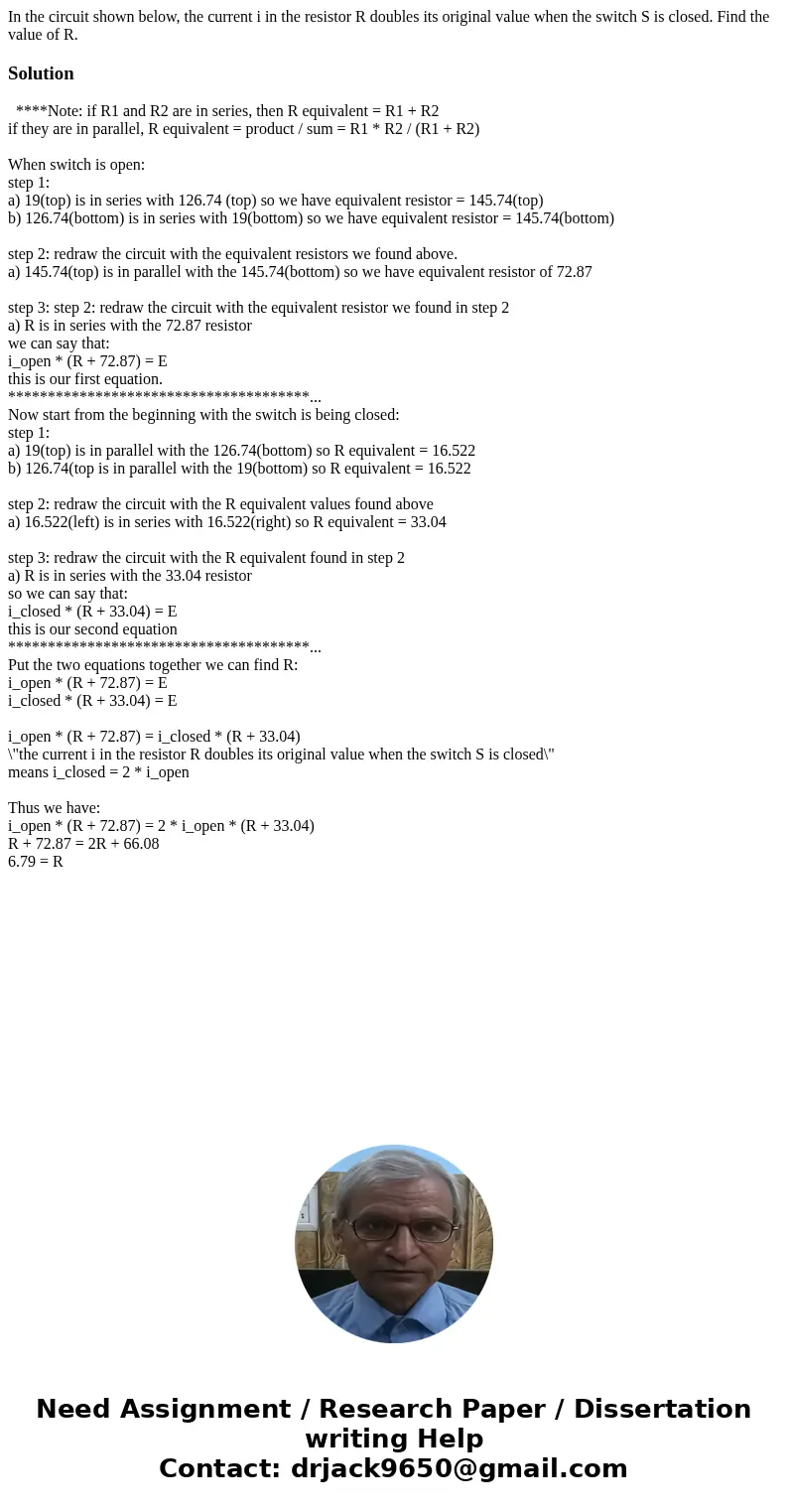In the circuit shown below the current i in the resistor R d
Solution
****Note: if R1 and R2 are in series, then R equivalent = R1 + R2
if they are in parallel, R equivalent = product / sum = R1 * R2 / (R1 + R2)
When switch is open:
step 1:
a) 19(top) is in series with 126.74 (top) so we have equivalent resistor = 145.74(top)
b) 126.74(bottom) is in series with 19(bottom) so we have equivalent resistor = 145.74(bottom)
step 2: redraw the circuit with the equivalent resistors we found above.
a) 145.74(top) is in parallel with the 145.74(bottom) so we have equivalent resistor of 72.87
step 3: step 2: redraw the circuit with the equivalent resistor we found in step 2
a) R is in series with the 72.87 resistor
we can say that:
i_open * (R + 72.87) = E
this is our first equation.
**************************************...
Now start from the beginning with the switch is being closed:
step 1:
a) 19(top) is in parallel with the 126.74(bottom) so R equivalent = 16.522
b) 126.74(top is in parallel with the 19(bottom) so R equivalent = 16.522
step 2: redraw the circuit with the R equivalent values found above
a) 16.522(left) is in series with 16.522(right) so R equivalent = 33.04
step 3: redraw the circuit with the R equivalent found in step 2
a) R is in series with the 33.04 resistor
so we can say that:
i_closed * (R + 33.04) = E
this is our second equation
**************************************...
Put the two equations together we can find R:
i_open * (R + 72.87) = E
i_closed * (R + 33.04) = E
i_open * (R + 72.87) = i_closed * (R + 33.04)
\"the current i in the resistor R doubles its original value when the switch S is closed\"
means i_closed = 2 * i_open
Thus we have:
i_open * (R + 72.87) = 2 * i_open * (R + 33.04)
R + 72.87 = 2R + 66.08
6.79 = R

 Homework Sourse
Homework Sourse